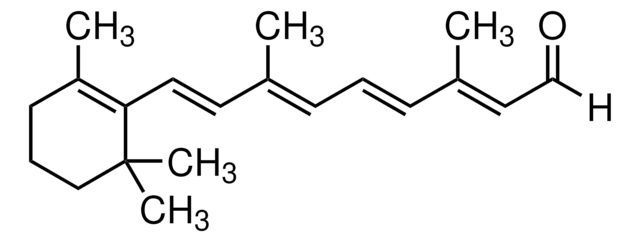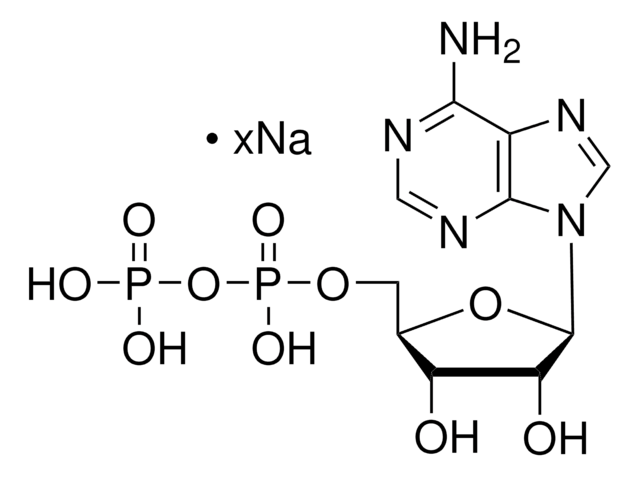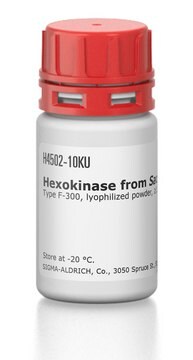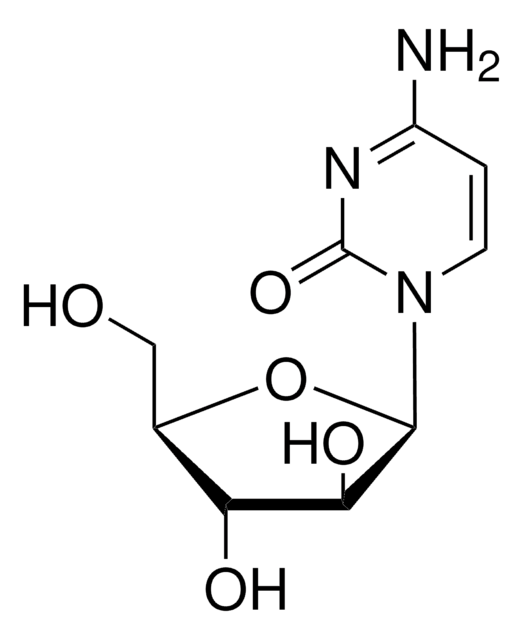H7779
Retinoic acid p-hydroxyanilide
≥95%
Sinónimos:
4-HPR, Fenretinide, N-(4-Hydroxyphenyl)retinamide
About This Item
Productos recomendados
origen biológico
synthetic (organic)
Análisis
≥95%
formulario
powder
color
yellow to yellow-orange
temp. de almacenamiento
−20°C
cadena SMILES
CC1=C(\C=C\C(C)=C\C=C\C(C)=C\C(=O)Nc2ccc(O)cc2)C(C)(C)CCC1
InChI
1S/C26H33NO2/c1-19(11-16-24-21(3)10-7-17-26(24,4)5)8-6-9-20(2)18-25(29)27-22-12-14-23(28)15-13-22/h6,8-9,11-16,18,28H,7,10,17H2,1-5H3,(H,27,29)/b9-6+,16-11+,19-8+,20-18+
Clave InChI
AKJHMTWEGVYYSE-FXILSDISSA-N
Categorías relacionadas
Descripción general
Aplicación
- as a synthetic retinoid to induce apoptosis in SEB-1 sebocytes
- as a medium supplement for C2C12 myoblasts to test its effect on ceramide formation
- to test in cytotoxicity in T-cell acute lymphoblastic leukemia (T-ALL)
Acciones bioquímicas o fisiológicas
Palabra de señalización
Danger
Frases de peligro
Clasificaciones de peligro
Acute Tox. 4 Dermal - Acute Tox. 4 Inhalation - Acute Tox. 4 Oral - Eye Irrit. 2 - Repr. 1B - Skin Irrit. 2 - STOT SE 3
Órganos de actuación
Respiratory system
Código de clase de almacenamiento
6.1C - Combustible acute toxic Cat.3 / toxic compounds or compounds which causing chronic effects
Clase de riesgo para el agua (WGK)
WGK 3
Punto de inflamabilidad (°F)
Not applicable
Punto de inflamabilidad (°C)
Not applicable
Equipo de protección personal
Eyeshields, Gloves, type P3 (EN 143) respirator cartridges
Certificados de análisis (COA)
Busque Certificados de análisis (COA) introduciendo el número de lote del producto. Los números de lote se encuentran en la etiqueta del producto después de las palabras «Lot» o «Batch»
¿Ya tiene este producto?
Encuentre la documentación para los productos que ha comprado recientemente en la Biblioteca de documentos.
Los clientes también vieron
Artículos
All-trans retinoic acid (RA, ATRA) is a pleiotropic activation factor that regulates genes associated with normal vertebrate cellular processes such as cell differentiation, cell proliferation, apoptosis, and embryonic development.
Nuestro equipo de científicos tiene experiencia en todas las áreas de investigación: Ciencias de la vida, Ciencia de los materiales, Síntesis química, Cromatografía, Analítica y muchas otras.
Póngase en contacto con el Servicio técnico












